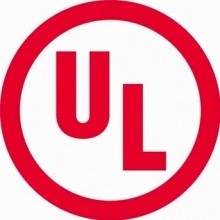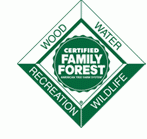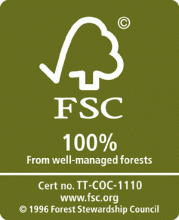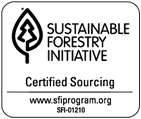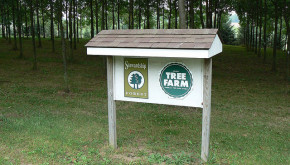
In many of my talks with landowners, the topic of certification comes up. It usually comes up because I bring it up and the landowner responds that they don’t know if they are certified, has never heard of certification or is confused by what being certified actually means to them.
Stepping away from forestry for a second, think about a symbol we have all seen on products:
This symbol is for Underwriters Laboratory. The organization tests and certifies many of the products we use every day. Check your Crock-pot, your hair dryer, and many other products worldwide (almost 22 billion products!) for this symbol. The presence of this symbol indicates that the product has been tested and certified safe. The consumer can be reasonably assured of the safety of the product when used as directed. It is important to note that the absence of the symbol does not indicate that the product isn’t safe.
Forestry certification is verification that the practices on a particular forest property are sustainable over time and meet specific criteria that differ depending on the entity providing certification. So forest products with a certification symbol originated from a forest that has been verified as sustainably managed to certain criteria. It does not speak to the soundness of the product (a 2x4 is a 2x4) but rather to how it was grown. Lack of a certification symbol also does not imply lack of sustainable management.
Who does the certifying?
In the United States, there are three certification bodies: American Tree Farm System, Forest Stewardship Council and Sustainable Forestry Initiative. Each organization has differences in their standards based on how the programs originated and have changed over time.
The American Tree Farm System (ATFS) is a landowner-based organization that originated in 1941. ATFS has prided itself on promoting sound forestry including water, wildlife, wood and recreation. Landowners in the Tree Farm System receive a sign for their property advertising their commitment to those resources. In 2008, Tree Farm was recognized under the Programme for the Endorsement of Forestry Certification systems (PEFC). This became the formal step to recognition of Tree Farm certification in the marketplace. You won’t see the Tree Farm symbol on 2x4s but wood from ATFS certified land is branded with PEFC or Sustainable Forestry Initiative (SFI) logos.
The Forest Stewardship Council (FSC) was created in 1992 in response to issues related to global deforestation. The intent of the group was to improve forest practices worldwide through a voluntary, market-based approach. While the other two certification systems are exclusive to the United States, FSC is recognized world-wide for forest certification.
The Sustainable Forestry Initiative (SFI) was established in 1994. The purpose of the organization was to promote sustainable forestry practices in the United States. SFI is normally associated with forest products companies but the certified sourcing label certifies wood produced from a range of ownership types, including industrial, nonindustrial, public and tribal lands.
Each of the certification systems has a set of principles that must be met for a property to be certified. Management plans are a requirement for certification. There is no easy answer on who should certify your property. Each certification system will appeal to different landowners based on their goals and available resources. In my opinion, the Tree Farm System is a low/no cost option for those looking for certification. However, it is important to understand how the certification is viewed in your market.
What benefits do I get from certification?
The answer is it depends. Sorry. In some locations landowners may see a price premium at the time of a timber sale. In other locations, this may not occur. One benefit many of us believe is happening, but is hard to document, is that sales on certified properties are receiving more bids for the wood. With more bids there is usually an increase in the per unit sales price. Another benefit is access to the mill. Mills need to process a set percentage of certified materials in their final products (like paper). Landowners with certified material will likely have an advantage in competitive markets. Of course the big benefit to certification is feedback on the management of your property and the recognition of doing the right thing.
|
|
American Tree Farm System (ATFS) | Forest Stewardship Council (Small, Low Intensity Managed Forests SLIMF) |
|---|---|---|
| Certifying Accreditation Body | ANSI National Accreditation Board (ANAB) and the Standards Council of Canada | Accreditation Services International |
| Standard Revision Period | Every 5 years | Varies |
| Number of Standards of Sustainability | 8 | 10
|
| Number of Indicators | 22 | 192 |
| Maximum Acreage Allowed | 20,000 acres | 2,471 acres |
| Market Recognition |
|
|
| Cost of Certification | Historically landowners have not paid directly for certification from Tree Farm (no certification costs or audit fees). In some cases this is still true but is dependent on the structure of the state Tree Farm committee. Check with your state Tree Farm committee. | Landowners pay an initial fee for certification which can be as high as $10,000. In addition, landowners are responsible for expenses associated with a certification audit every 5 years and an annual surveillance audit. |
Photo courtesy of Peter Linehan/Flickr


